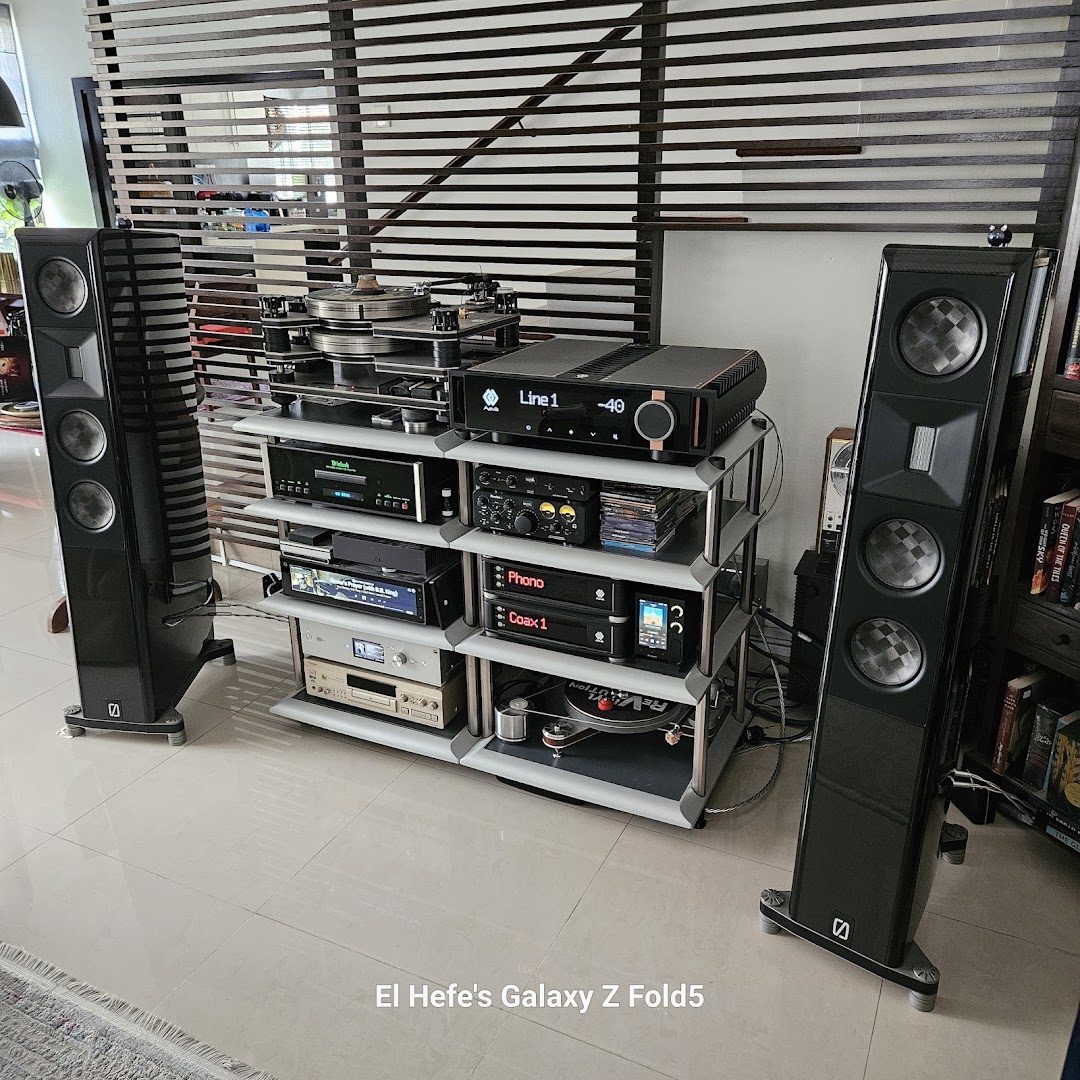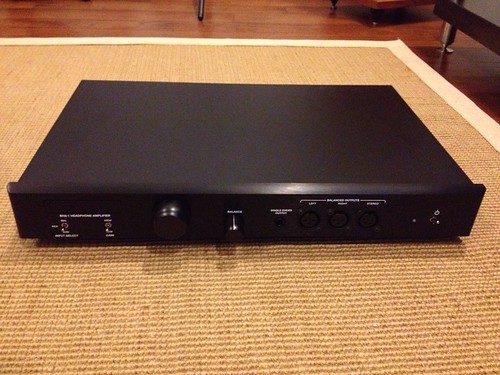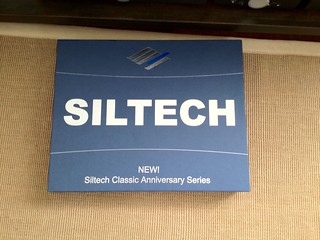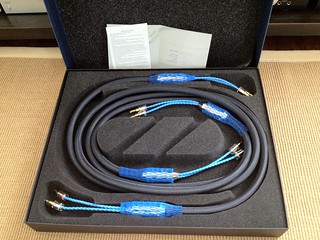UNANIMOUS U-Art (Y) USB Cable: The Art of Separation
First impressions: Impressive! When I received the sample, it was immaculately packaged in high quality box, complete with foam to house this cryogenically treated USB cable. The red woven USB cable does look the business and Kingrex spared no expense in its built too. With 24K gold plated USB A and B connections and cryogenic treatment on its silver-plated oxygen-free copper conductors, this cable made me intrigued to really test whether it will deliver more over my current el cheapo USB cable. Each and every piece of this cable is also 100% handmade.
The first unique feature I noticed is that this USB cable came in with 2 of USB A connector; Y-split from one USB B connector. This is where Kingrex is proud of its design of separating power signal from digital signal. These USB A connectors are labelled with ‘Battery’ and ‘Wave’ signal diagrams. With the USB B connector plugged into Kingrex UD384 USB DAC or any other USB enabled DAC, there are 2 ways to connect the A connectors:
1. Connect both Battery and Wave connectors into 2 separate USB inputs on your laptop
2. Connect the Wave connector to your laptop and Battery connector to Kingrex U Power battery supply (featured in previous review of UD384 USB DAC)
I opted for option 2 above for this review. It gets a little bit untidy when you need to connect one USB A connection to a power supply e.g.: the U Power then the other to the laptop. It’s like a 3 way junction on my hifi rack. Even though, you can actually connect both USB A connections to the laptop, but with U power is when the cable perform best.
Straight out of the box, the sound produced through this USB cable is as ‘cold’ as the cryogenic treatment itself. A bit on the flat side. Although, spaciousness is something that’s immediately noticeable.
Specs:
· USB 2.0 high speed certified
· Transmits data up to 480 MBPS
· Separate power and signal cable
· Length: 2 metres
· Flat structure
· 4 signal Conductor SymmetricTM
Performance:
To me, testing cables is trickier compared to hifi equipment. Most times, the different in SQ can be so subtle that our ears just cannot hear what different cable can do to the music we listen to. And for this, I only used 1 particular track: Black Magic Women by Santana (MP3 320 kbps/48 kHz). I chose a hi spec MP3 as oppose to a FLAC to really test what this cable can do to a less superior audio format.
The percussion on this track is one of my favorite. Its not a typical heart-pounding drum beats but more musical and ‘traditional’ so to say. Just to refresh my memory on how the sound is, I played this track using my el cheapo USB cable. Immediately after that, I swap it to this U-Art cable and boy how the sound changed. Notice here I mentioned the word changed rather than improved. The sense of space suddenly filled my room. The liveliness (or is it hippiness?) of Santana music coloured with spaciousness where the extension of the low ends was beyond the normal experience I have with this track. It was still controlled but it somehow sounded like each notes were extended. However, even though spaciousness is there, it still sounded a bit flat.
I was then advised by Kingrex to run in the cable for 300 hours and that’s what exactly what I did. Throughout the run in period, I listened to various songs just to be more critical on this product. I didn’t actually time myself to reach 300 hours but after about 3 weeks of listening, I played the Black Magic Women track again. Now, this is something completely different compared to the first time around. The spaciousness is even more evident plus the flatness was gone. Santana’s guitar sounded so melodic and the stereo imaging and staging was perfect. It made me visualized where each musician were standing or sitting during recording. The percussion in this song was awe inspiring enough that made me jump out of my chair and started playing along to the song on my drums.
Final verdict: The Unanimous U-Art Y USB cable is definitely one cable that serious CAS enthusiasts should audition even though if it is to connect to their own DAC. At a retail price of USD599, this cable compliments nicely into a basic to even high end CAS set up. It’s a no frill and no nonsense upgrade with little risk of you not be able to hear the difference it can make to your system. If your CAS system sounds flat and in need of some breath, this is one cable you should try to audition.
Signal and power separation really made the different. And of course the cryogenic treatment definitely played its part too. Its well built and deliver or now I can say improved my CAS set up over the el cheapo USB cable. If spaciousness and liveliness of music is what you are looking for, this cable excels in that.
Gear:
a. Hardware: Macbook Pro
b. Software: iTunes for 320 kbps/48 kHz MP3s
c. Amplifier: Musical Fidelity M6i + M1 PWR power amp
d. Speakers: ProAc Response D18
e. Speaker cable: Siltech Classic Anniversary 330L
f. Interconnect (UD 384 RCA to M6i amp): Cambridge Audio 700 Series
Price: UNANIMOUS U-Art (Y) USB cable is retailed at USD 599
To contact Kingrex directly, they can be contacted at:
Carol Tseng
Tel: +886-2-8226-9561
Email: carol@jt-comatz.com or service@kingrex.com
TEMPORARY WEBSITE: http://www.taiwantrade.com.tw/Kingrex/home/en_US













